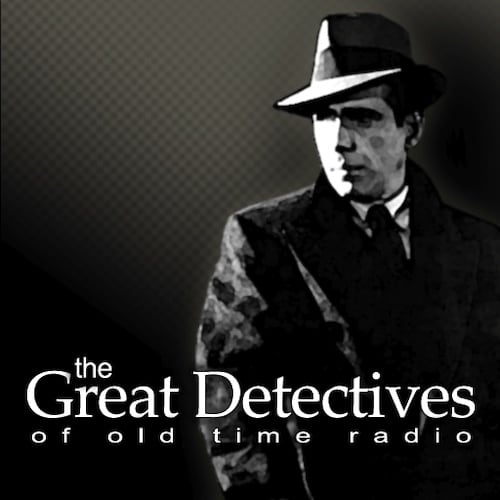Currently, I’m up to Episode 10 of Season 7 of Monk on the Netflix Instant Watch, which means I’m pretty close to the end of the series. How do you get more Monk if eight years wasn’t enough? One thing that occurred to me is reading the Monk novels by Lee Goldberg (or more to the point, listening to the book through Audible). While I could have started with the first Monk novel, Mr. Monk Goes to the Firehouse, I decided to skip that one as it was adapted to a Season 5 episode and opt for a novel that had a far more interesting plot, Monk and the Blue Flu.
The Plot: Police are not getting what they want in negotiations with the city. With a serial killer on the loose, detectives and senior officers phone in sick, staging a blue flu to put pressure on the city.
The Mayor of San Francisco offers to reinstate Monk and make him Captain of Homicide if he’ll help out during the crisis. Monk jumps at the chance and takes command of a motley crew of discharged cops called back to duty including a senile detective, a paranoid schizophrenic detective, and a violent psychotic detective.
The Mystery: Goldberg crafted a fine mystery here, with multiple cases playing out in the novel. We’ve got nine separate murders (with a shoplifting ring thrown in for the heck of it) and three different killers.
One complaint with Monk in the later seasons was that the mystery element of the show seemed weak. No problem here. This is a fun ride with clever cases that really require some thought to solve.
The mystery is in the tradition of the cozy mystery, told without a whole lot of bloody details. In other elements of the story, Mr. Monk and the Blue Flu is about as clean or even more so than the TV version, with the notable exception of some pretty tacky flirting between two of the psychotic detectives’ assistants.
Monkness:
Of course, a Monk story is more than just a mystery. The characters on Monk, particularly Monk himself add the comedy and drama that makes the show a winning combination even when we’re let down by the mystery. Here, Goldberg falls short.
The book is told from the perspective of Monk’s Assistant, Natalie Teager. This is a popular tactic for mystey writers to use when dealing with genius detectives (think Dr. Watson or Archie Goodwin.) It’s difficult to see the world through the eyes of a super genius, and that goes double for Monk. However, in the book, using Natalie doesn’t work well, as she doesn’t quite ring true to the Natalie we know from the TV series.
Natalie’s narration is filled with what’s known in the writing business as “telling.” We are repeatedly taken out of the story to get her opinions on everything from politics to shopping.
Her daughter, Julie doesn’t ring true either as a somewhat shallow fashion diva, nor does Captain Stottlemeyer seem to be quite right. Even Monk is occassionally not himself, going way over the top, even for him.
In one scene early in the book, Captain Stottlemeyer steps in dog doo at a crime scene. Monk insists that Stottlemeyer remove a shoe and have it sent for hazardous waste destruction-and Stottlemeyer actually goes along with this. I didn’t buy Monk going that far, nor Stottlemeyer humoring him to that degree. This also creates a strange inconsistency in the story when Monk has Natalie surrender a shoe, he insists that she remove both shoes for symmetrical reasons, but no such insistence was made with Stottlemeyer earlier.
While the characters were more expressive about emotions in this story than in a normal episode of Monk, the emotional scenes had less impact. On the TV show, the writers were experts at showing us things that evoked emotion. Here, we were more told how to feel about different scenes.
Of course, to be fair, Goldberg’s task is a challenging one. While its difficult to adapt books as movies and television shows, it’s even harder to adapt a television show to a book. While, we may have an idea of what a character is like from reading a book, when we’ve seen a character on a TV show, the actor’s interpretation has given our imaginations a solid picture of who the character is, and we don’t like deviations.
You also lose things in translation between the mediums. For example, Goldberg couldn’t show us Monk during his therapy session with Dr. Kroger due to the limit of having the story told from Natalie’s point of view .
The book did have its moments in several scenes when Monk acted like Monk. Randy Disher was well-done, although we didn’t see enough of him in this story. I will say that while the looney detectives on Monk’s replacement squad were a bit stereotypical, the idea of all of these psychosises coexisting within the same division was pretty funny.
It also continued the Monk tradition of providing hope for those with mental illness. The clear message was that they could overcome their difficulties to function in society, even if their approach to life is a little different. While I won’t give away the exact conclusion, Goldberg did give Monk’s colleagues in amicable ending.
If you read Mr. Monk and the Blue Flu, you can expect a pretty good mystery and a story that has its moments. However, don’t expect to get an episode of Monk via audiobook or paperback.
Mr. Monk and the Blue Flu is available from Audible.
This post contains affiliate links, which means that items purchased from these links may result in a commission being paid to the author of this post at no extra cost to the purchaser.
